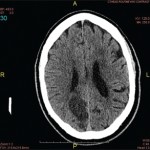 Physicians consider resting variability in physiological systems, such as blood pressure and cerebral blood flow velocity (CBFV), to be a marker of physical and mental health. Recent research indicates that patients with fibromyalgia syndrome have lower CBFV variability, in the low- and high-frequency ranges, than healthy controls. This decreased variability may reflect impaired coordination of cerebral regulatory systems.
Physicians consider resting variability in physiological systems, such as blood pressure and cerebral blood flow velocity (CBFV), to be a marker of physical and mental health. Recent research indicates that patients with fibromyalgia syndrome have lower CBFV variability, in the low- and high-frequency ranges, than healthy controls. This decreased variability may reflect impaired coordination of cerebral regulatory systems.
Casandra I. Montoro, PhD, researcher at the University of Jaen, Spain, and colleagues found CBFV variability was differentially associated with clinical variables. Their research was the first study to characterize the mean beat-to-beat CBFV variability in the middle cerebral arteries and anterior cerebral arteries during resting state in fibromyalgia patients. The results, which were published in PLos ONE, highlight that short-term CBFV variability—as opposed to long-term variability—was associated with better clinical outcomes.1
The investigators used Fast Fourier transformation to identify a spectral profile with four components: 1) a very low-frequency (VLF) component with the highest amplitude at 0.0024 Hz; 2) a VLF component around 0.01-0.025 Hz; 3) a low-frequency component from 0.075-0.11 Hz; and 4) a high-frequency component with the lowest amplitude from 0.25-0.35 Hz.
“Our results showed overall lower VLF (second component, i.e., 0.01 to 0.025 Hz), low frequency and high frequency CBFV variability in the middle cerebral arteries and anterior cerebral arteries of fibromyalgia syndrome patients than healthy individuals,” write the authors in their conclusion. “However, the first VLF peak occurring at ultra-low frequencies (i.e., 0.0024 Hz) exhibited greater power in patients. The general inverse associations of emotional, clinical and functional impact variables with CBFV variability at low-frequency and high-frequency ranges support the notion that short-term CBFV variability at these frequencies might fulfill a protective role with respect to brain function and may be considered an index of positive health status.”
The researchers found substantial differences in CBFV variability between fibromyalgia patients and healthy controls over the entire frequency spectrum. However, they acknowledge that some of the medications used by patients in the fibromyalgia group may have influenced CBFV variability and contributed to the differences between the two groups. Nevertheless, they consider the differences noteworthy, particularly because patient responses to the questionnaire indicated that scores that denote emotional states, such as depression and anxiety, tended to be inversely associated with low- and high-frequency CBFV variability.
In contrast, association between the first VLF component and end emotional, clinical and functional variables was positive. The relationship was particularly strong for the right (and not left) anterior cerebral arteries, which may suggest an emotion-related brain asymmetry and the effect of mental load on CBFV variability. The patients’ use of antidepressant, anxiolytic, analgesic and opioid medications was associated with lower CBFV variability in the left low-frequency middle cerebral arteries, left low-frequency anterior cerebral arteries, left second VLF anterior cerebral arteries and right low-frequency middle cerebral arteries.
When the investigators examined the connection between CBFV variability and clinical variables, they found insomnia hypersomnia and fatigue were overall inversely associated with variability in the second VLF and low- and high-frequency components. The authors conclude that CBFV variability analysis may be a promising tool for characterizing fibromyalgia pathology, as well as for understanding facets of health-related quality of life.
Lara C. Pullen, PhD, is a medical writer based in the Chicago area.
Reference
- Montoro CI, Duschek S, Schuepbach D, et al. Cerebral blood flow variability in fibromyalgia syndrome: Relationships with emotional, clinical and functional variables. PLoS One. 2018 Sep 20;13(9):e0204267.

